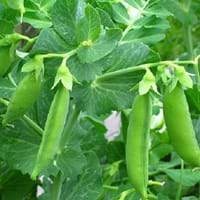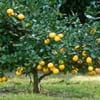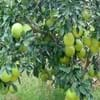Life Span
Perennial
Annual
Origin
Mexico, Central America
Mediterranean
Types
Reinikie, Dade, Pike, Suebelle and Golden
Climate
Sugar Bon pea, Super Sugar Snap bean
Habitat
Tropical Highlands
Fields, Loamy soils
USDA Hardiness Zone
8-11
Not Available
Sunset Zone
H1, H2, 14, 15, 16, 17, 18, 19, 20, 21, 22, 23, 24
A1, A2, A3, H1, H2, 1a, 1b, 2a, 2b, 3a, 3b, 4, 5, 6, 7, 8, 9, 10, 11, 12, 13, 14, 15, 16, 17, 18, 19, 20, 21, 22, 23, 24
Habit
Oval or Rounded
Vining/Climbing
Minimum Width
Not Available
Flower Color
Light Green, Ivory
White, Pink, Lavender
Flower Color Modifier
Bicolor
Bicolor
Fruit Color
Light Yellow, Yellow green, Light Green
Green
Leaf Color in Spring
Green, Dark Green
Green, Sea Green, Gray Green
Leaf Color in Summer
Green, Dark Green
Not Available
Leaf Color in Fall
Green, Dark Green
Green, Blue Green, Gray Green
Leaf Color in Winter
Light Green
Green, Blue Green, Gray Green
Leaf Shape
Alternate
Egg-shaped
Plant Season
Spring, Summer, Fall, Winter
Spring, Fall, Winter
Sunlight
Full Sun
Full Sun, Partial Sun
Type of Soil
Loam, Sand
Clay, Loam, Sand
The pH of Soil
Acidic, Neutral
Neutral
Soil Drainage
Well drained
Well drained
Bloom Time
Winter, Late Winter
Early Spring, Spring, Late Spring, Fall, Late Fall, Early Winter, Winter, Late Winter
Tolerances
Drought
Dry Conditions, Salt and Soil Compaction, Variety of soil types
Where to Plant?
Ground
Ground
How to Plant?
Budding, Grafting, Seedlings, Vegetative
Seedlings
Plant Maintenance
Medium
Medium
Watering Requirements
Do not water frequently, Needs more water during establishment, Water during dry weather
Allow to dry out slightly between watering, Needs watering once a week
In Summer
Lots of watering
Consistently
In Spring
Moderate
Adequately
In Winter
Average Water
Less Watering
Soil pH
Acidic, Neutral
Slightly Acidic
Soil Type
Loam, Sand
Clay, Loam, Sand
Soil Drainage Capacity
Well drained
Well drained
Sun Exposure
Full Sun
Full Sun, Partial Sun
Pruning
Remove damaged leaves, Remove dead branches, Remove dead leaves
No pruning needed, Prune in flowering season, Remove damaged leaves
Fertilizers
All-Purpose Liquid Fertilizer
Compost, fertilize in winter
Pests and Diseases
Red blotch
Downy mildew, Gall Insects, Leaf curl, Peach Leaf Curl, Powdery mildew, Root rot
Plant Tolerance
Drought
Light Frost
Flowers
Insignificant
Showy
Flower Petal Number
Single
Single
Fragrant Flower
Not Available
Yes
Foliage Texture
Medium
Medium
Foliage Sheen
Matte
Matte
Attracts
Birds
Not Available
Allergy
drowsiness
Diarrhea, Intestinal gas
Aesthetic Uses
Not Used For Aesthetic Purpose
As decorated salad
Beauty Benefits
Not Available
Remove blemishes, Skin Problems
Environmental Uses
Air purification
Fixes Nitrogen, Food for animals, Very little waste
Medicinal Uses
Anti-carcinogenic effects, Colon Cancer
No Medicinal Use
Part of Plant Used
Fruits, Pulp, Seeds
Leaves, Seeds
Other Uses
Used As Food
Cosmetics, Making Shampoo, Used as a nutritious food item, Used As Food
Used As Indoor Plant
No
No
Used As Outdoor Plant
Yes
Yes
Garden Design
Edible, Fruit / Fruit Tree, Shade Trees, Tropical
Container, Edible, Herb, Vegetable, Vine
Botanical Name
CASIMIROA edulis
PISUM sativum
Common Name
White Sapote
Garden Pea
In Hindi
White Sapote
चीनी मटर
In German
White Sapote
Kefe
In French
Sapote blanche
Erbse
In Spanish
White Sapote
guisante
In Greek
White Sapote
μπιζέλι
In Portuguese
White Sapote
ervilha
In Polish
White Sapote
groch
In Latin
White Sapote
pea
Phylum
Magnoliophyta
Magnoliophyta
Class
Magnoliopsida
Magnoliopsida
Clade
Angiosperms, Eudicots, Rosids
Dicotyledonous
Tribe
Not Available
Not Available
Subfamily
Not Applicable
Not Available
Season and Care of White Sapote and Sugar Snap Pea
Season and care of White Sapote and Sugar Snap Pea is important to know. While considering everything about White Sapote and Sugar Snap Pea Care, growing season is an essential factor. White Sapote season is Spring, Summer, Fall and Winter and Sugar Snap Pea season is Spring, Summer, Fall and Winter. The type of soil for White Sapote is Loam, Sand and for Sugar Snap Pea is Clay, Loam, Sand while the PH of soil for White Sapote is Acidic, Neutral and for Sugar Snap Pea is Neutral.
White Sapote and Sugar Snap Pea Physical Information
White Sapote and Sugar Snap Pea physical information is very important for comparison. White Sapote height is 610.00 cm and width 760.00 cm whereas Sugar Snap Pea height is 30.00 cm and width Not Available. The color specification of White Sapote and Sugar Snap Pea are as follows:
White Sapote flower color: Light Green and Ivory
White Sapote leaf color: Green and Dark Green
Sugar Snap Pea flower color: White, Pink and Lavender
- Sugar Snap Pea leaf color: Green, Sea Green and Gray Green
Care of White Sapote and Sugar Snap Pea
Care of White Sapote and Sugar Snap Pea include pruning, fertilizers, watering etc. White Sapote pruning is done Remove damaged leaves, Remove dead branches and Remove dead leaves and Sugar Snap Pea pruning is done No pruning needed, Prune in flowering season and Remove damaged leaves. In summer White Sapote needs Lots of watering and in winter, it needs Average Water. Whereas, in summer Sugar Snap Pea needs Consistently and in winter, it needs Less Watering.





